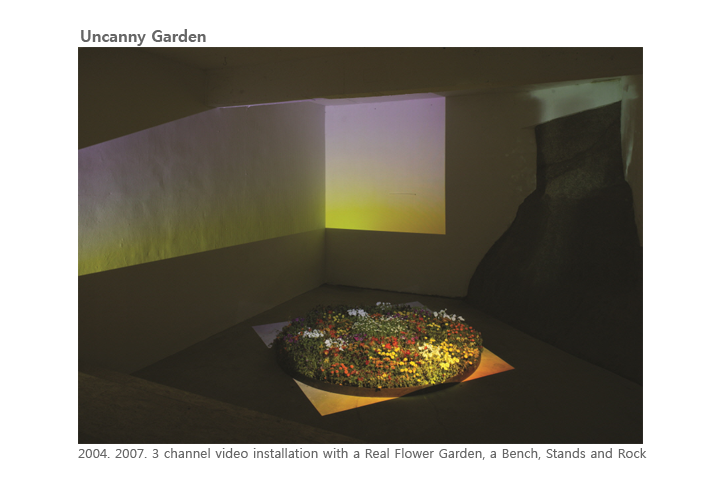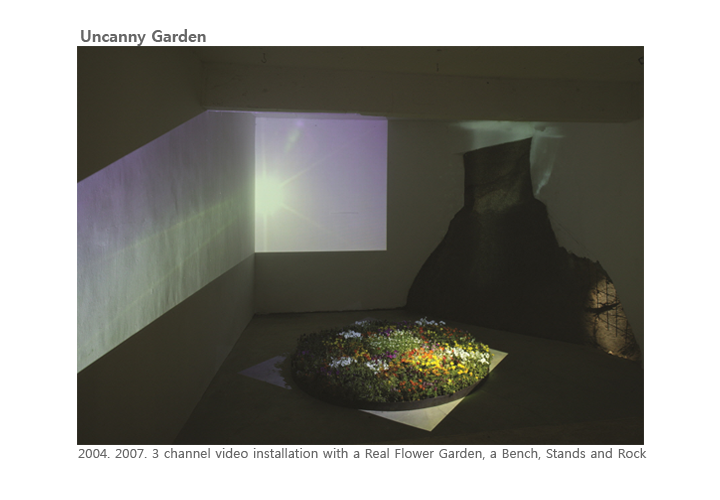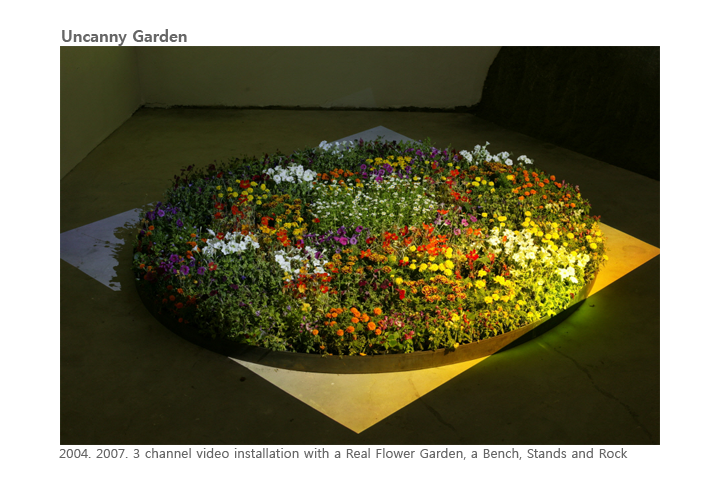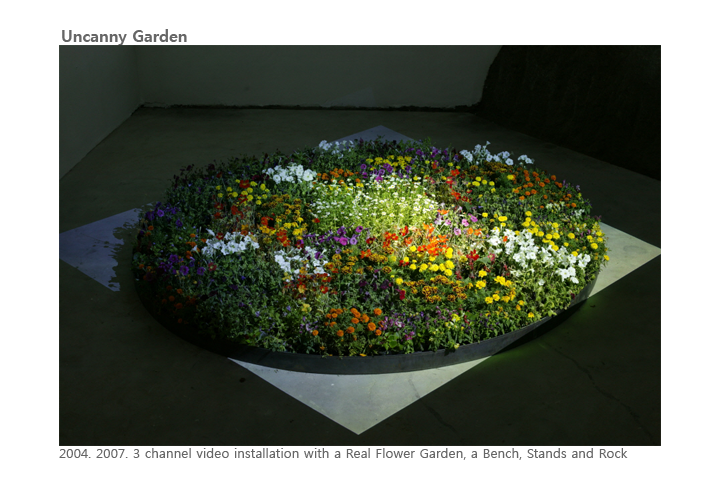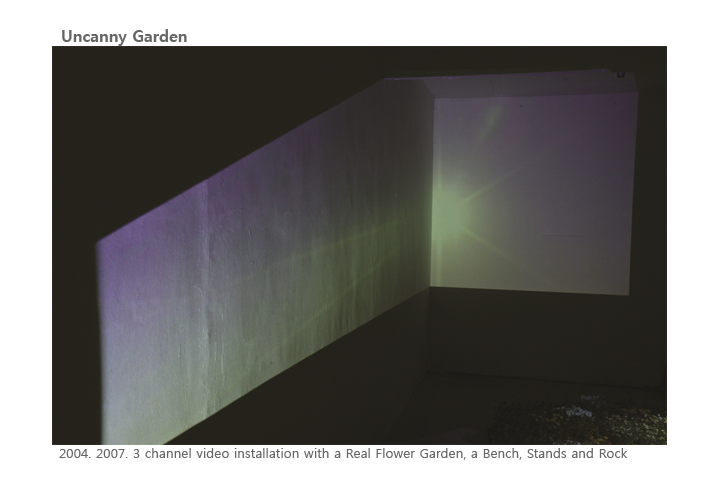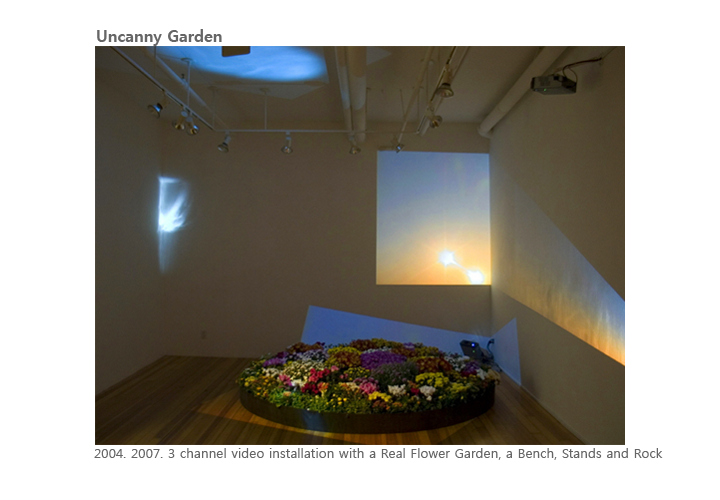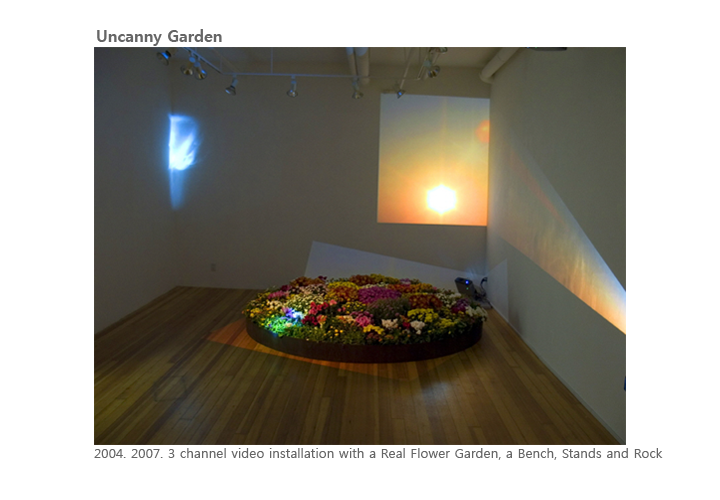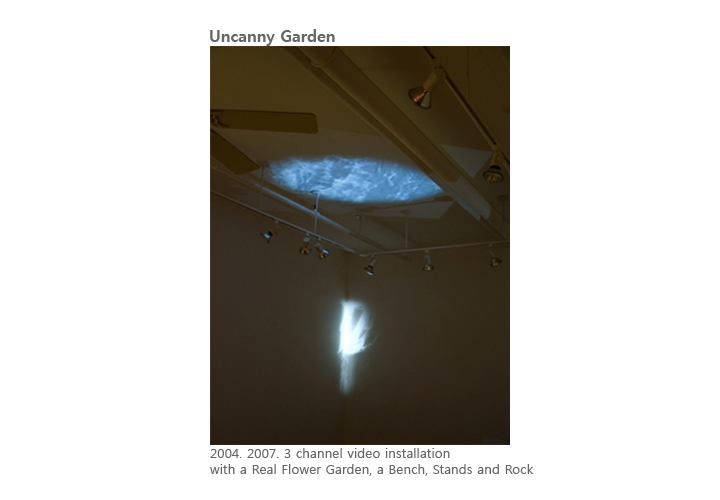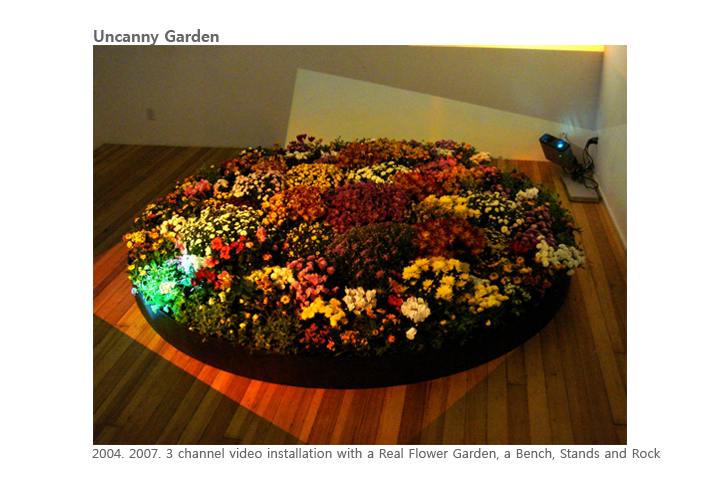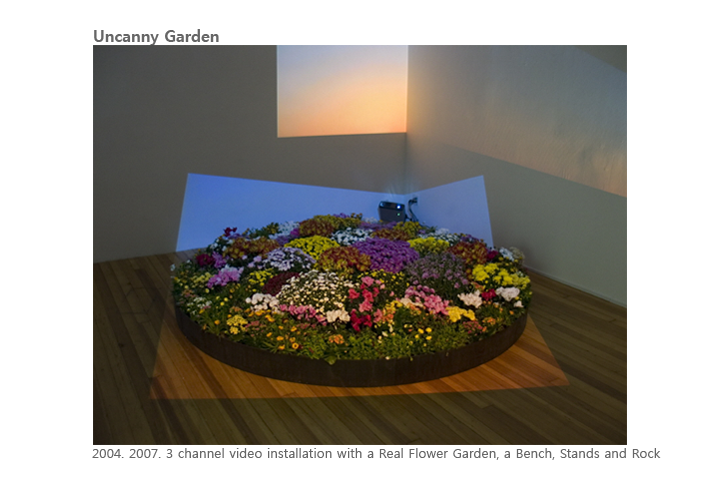| | |
I project video images onto the two walls right angled with each other and with real flowers circularly arranged on the gallery floor. The projected video on the wall shows the changing process that condensed a day into 3 minutes 30 seconds. This is a sort of an experiment how flowers can survive under the changes of artificial lighting. Any plant sensitively responds to changes in the environment, however it has its own internal ‘rhythm temporally programmed’ as well. My experiment of circumstantial adaptability between plants programmed in terms of evolutionary process of species and artificial circumstances is really a diabolic question. The flowers surviving the exhibition were transplanted to the field around my studio in Pa-Ju, the suburbs of Seoul. I was wondering how plants would survive such a change between artificial circumstances and the internally set clock of real nature.
‘Paradise’ is an invisible landscape drawn by survival power preserved even within a situation’s ultimatum
In the installation entitled Uncanny Garden, she incorporates flowers―bits of genuine nature―into schemes that at first seem dominated by video images―pictures mediated by technological processes. At first glance, it seems as though Jeong is contrasting different kinds of communication.
But in Jeong’s art, nature acts as a bridge to a spiritual unity that tends to exist primarily as experience or in the imagination. It is a primal origin of metaphor, so that we cannot conceive of a lived coherence without it. Jeong presents a visual imagery meant to transcend the means responsible for making it. Nature is referred to in no uncertain terms. In Uncanny Garden, her projection of video images onto two connected walls collapses the length of an entire day into an experience lasting only three and a half minutes. The real flowers inject reality into a fleeting demonstration of extended time; Jeong will make no attempt to care for the flowers for the duration of the exhibition, saving the remaining, surviving blooms for transplanting into the backyard of a friend from Brooklyn. As she comments, “I was wondering how plants would survive a change between artificial circumstances and the internally set clock of nature.” But while Jeong is interested in seeing whether the plants would live in an artificially lit environment, she also gives us the experience of an entire day compressed into a duration of less than four minutes, in which the light of the sun plays a major role. The conflict between artifice and reality is expressed as a screen projecting the sun’s illumination and an actual garden; however, the final experience is that of survival and transformation: those flowers that continue to exist are planted again in an outdoor field. The experiment is successful in that the process of life continues, even if damage has been done.
Jonathan Goodman
-Transcribe a passage from the critique of the seventh solo exhibition

